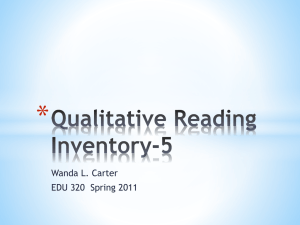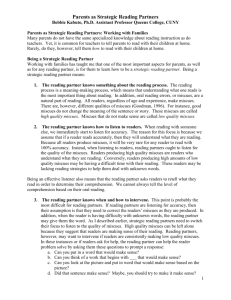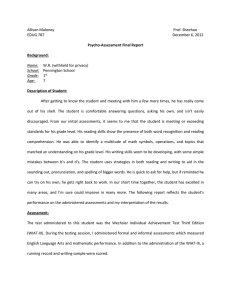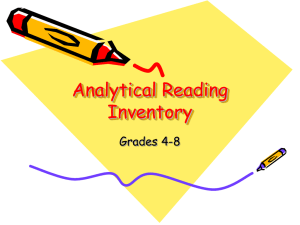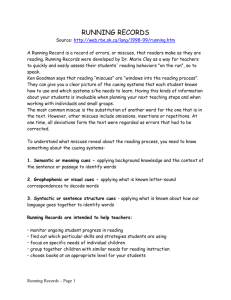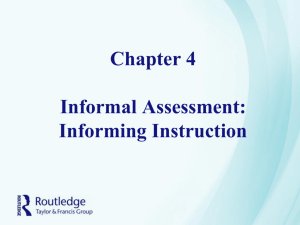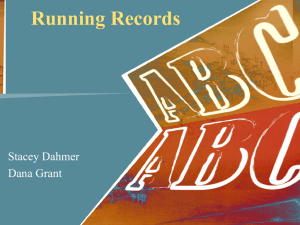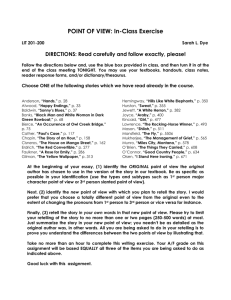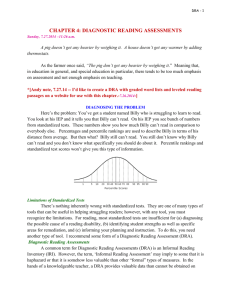Analysis Worksheet
advertisement
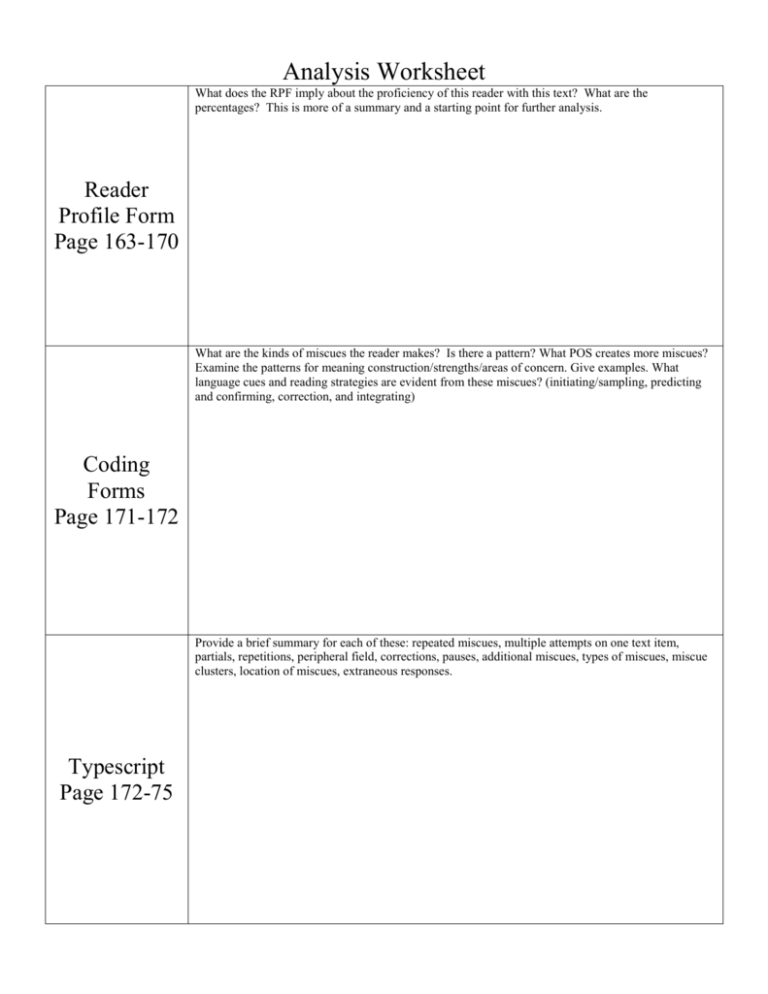
Analysis Worksheet What does the RPF imply about the proficiency of this reader with this text? What are the percentages? This is more of a summary and a starting point for further analysis. Reader Profile Form Page 163-170 What are the kinds of miscues the reader makes? Is there a pattern? What POS creates more miscues? Examine the patterns for meaning construction/strengths/areas of concern. Give examples. What language cues and reading strategies are evident from these miscues? (initiating/sampling, predicting and confirming, correction, and integrating) Coding Forms Page 171-172 Provide a brief summary for each of these: repeated miscues, multiple attempts on one text item, partials, repetitions, peripheral field, corrections, pauses, additional miscues, types of miscues, miscue clusters, location of miscues, extraneous responses. Typescript Page 172-75 Discuss the retelling score if applicable. Use the Retelling Taxonomy to discuss the retelling. Cross reference your summary with information from coding forms and RFP. Retelling Page 175-176 The BRI provides you with information about the reader’s personal model of reading. Is it skills based, subskills, or holistic? How do you know? Examine each response to each question. Burke Reading Inventory pages 180182 Cross reference all documents used in the analysis. Look for patterns. Scrutinize everything. Consider language patterns and reading strategies throughout analysis. For each miscue ask yourself: o Is this more like the others or less like the others? o How many others fit this pattern (type, POS, syn and sem acceptability, etc)? o What does this miscue tell you about the reader’s use of predicting and confirming?
